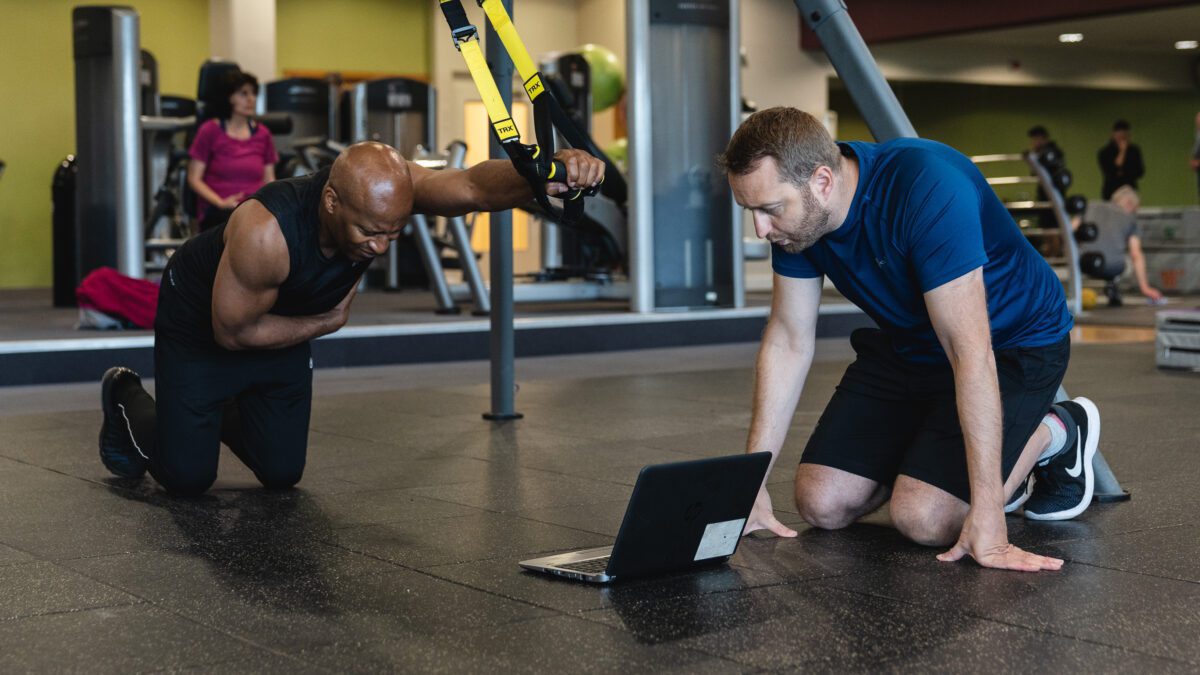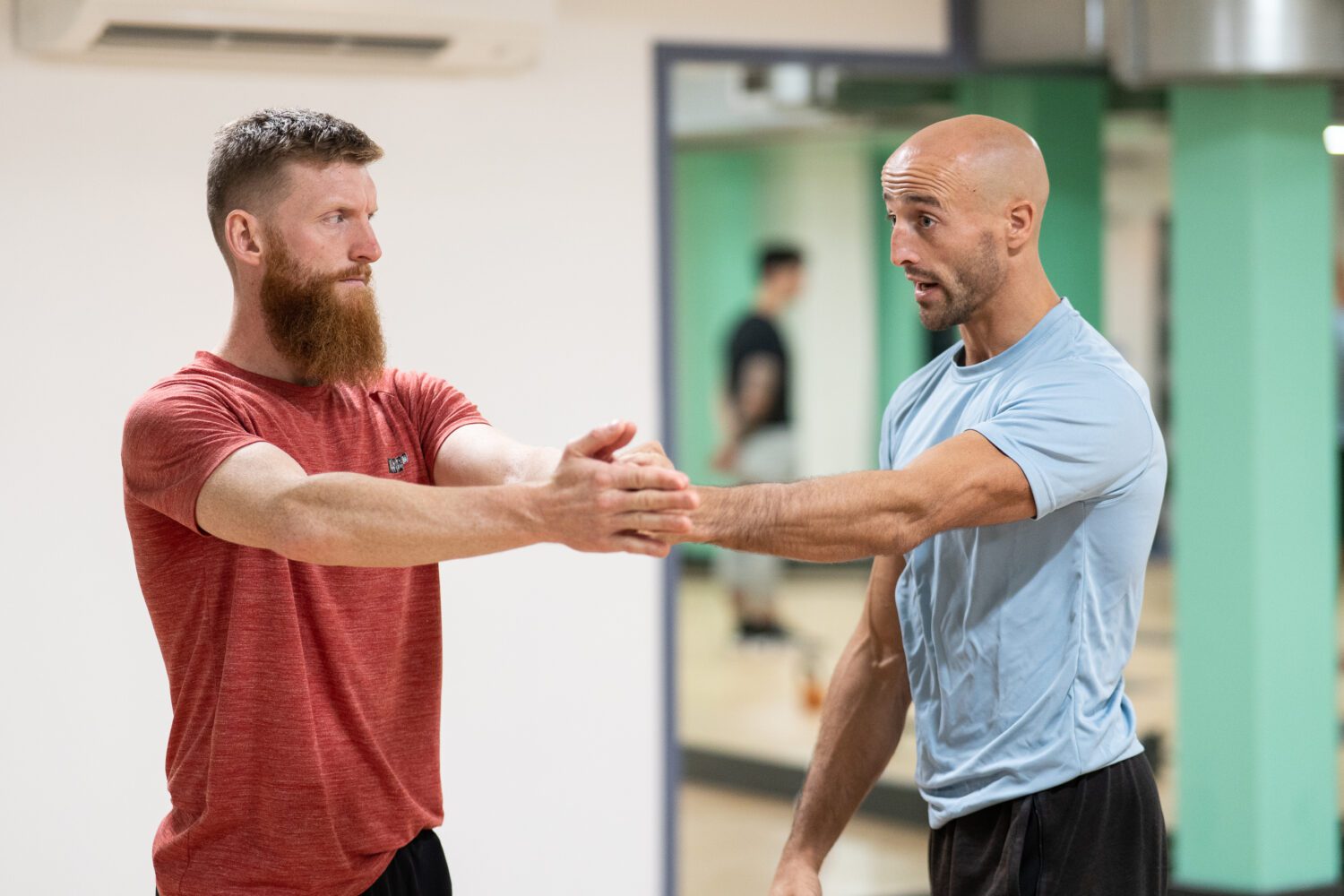A fitness instructor leads group exercise classes and provides guidance to multiple participants. A personal trainer offers individualized workout plans and one-on-one coaching.
Both fitness instructors and personal trainers play crucial roles in the fitness industry. Fitness instructors typically teach exercise classes such as aerobics, Zumba, or spinning.
They focus on ensuring all participants get a safe and effective workout. Personal trainers, on the other hand, create customized fitness programs based on individual client needs and goals.
They work closely with clients to monitor progress, adjust routines, and provide personalized motivation. Understanding these differences helps you choose the right professional to meet your fitness goals, whether you prefer group settings or personalized attention.
Introduction To Fitness Professionals
Fitness professionals play a crucial role in health and wellness. They guide people in exercise routines and healthy lifestyles. But what's the difference between a Fitness Instructor and a Personal Trainer? Understanding their roles helps in choosing the right professional for your needs.
Roles And Responsibilities
Fitness Instructors typically work in group settings. They lead exercise classes and ensure everyone stays safe. They design workout routines for groups.
Personal Trainers focus on one-on-one sessions. They create personalized fitness plans for individual clients. They track progress and adjust routines based on needs.
Impact On Health And Wellness
Both professionals greatly impact health and wellness.
- Fitness Instructors motivate large groups to stay active.
- Personal Trainers provide tailored advice and support.
Here's a quick comparison to summarize:
| Aspect | Fitness Instructor | Personal Trainer |
|---|---|---|
| Setting | Group Classes | Individual Sessions |
| Focus | General Fitness | Personalized Fitness |
| Plan Design | For Groups | For Individuals |
Diving Into The Fitness Instructor's World
Fitness instructors play a crucial role in the world of fitness. They guide and motivate groups of people during workout sessions. Their energy and enthusiasm help create a positive atmosphere. Let's explore their world in detail.
Group Dynamics
Fitness instructors excel in managing group dynamics. They lead classes such as aerobics, yoga, and spinning. Their goal is to keep everyone engaged and motivated. This requires a lot of energy and personality.
They use music and rhythm to make the class fun. This helps participants stay motivated. The instructor also provides modifications for different fitness levels. This ensures everyone can participate safely.
Here is a table showing common group fitness classes:
| Class Type | Description |
|---|---|
| Aerobics | High-energy cardio workout with music. |
| Yoga | Focuses on flexibility, balance, and breathing. |
| Spinning | Indoor cycling with various intensities. |
Certification Paths
To become a fitness instructor, one needs the right certification. Many organizations offer certification programs. These programs cover various aspects of group fitness training.
Some popular certifications include:
- ACE Group Fitness Instructor
- AFAA Group Fitness Instructor
- NASM Group Fitness Instructor
Each program has its own requirements and exams. Completing these certifications ensures the instructor has the necessary skills. They must also complete continuing education to stay updated.
Below is a list of common certification requirements:
- High school diploma or equivalent
- CPR/AED certification
- Passing a certification exam
Certified fitness instructors are well-equipped to lead group classes. They ensure participants get the most out of their workouts.
Exploring The Life Of A Personal Trainer
Key Differences Highlighted
Understanding the difference between a Fitness Instructor and a Personal Trainer can help you decide which professional to hire. Both roles are crucial in the fitness industry but have distinct responsibilities.
Client Interaction
A Fitness Instructor typically works with multiple clients simultaneously. Their main focus is to lead group classes such as yoga, spinning, or aerobics. They provide general instructions and ensure everyone follows the routine.
On the other hand, a Personal Trainer offers one-on-one sessions. They tailor their approach to meet the unique needs of each client. This personalized attention helps achieve specific fitness goals more effectively.
Program Design
Fitness Instructors usually follow a pre-designed program. They might create general workout plans suitable for a group setting. These plans aim to cater to a diverse audience.
In contrast, a Personal Trainer designs customized programs. They assess the client's fitness level, goals, and health conditions. Then, they create a tailored workout plan that evolves as the client progresses.
| Aspect | Fitness Instructor | Personal Trainer |
|---|---|---|
| Client Interaction | Group sessions | One-on-one sessions |
| Program Design | General plans | Customized plans |
Educational Requirements
Understanding the educational requirements for fitness instructors and personal trainers can help you decide your career path. Each role requires unique qualifications and skills. Here's a detailed look at what each profession demands educationally.
For Fitness Instructors
Fitness instructors typically work in group settings, leading classes such as yoga, aerobics, or spin. Their educational background might not be as extensive as personal trainers, but certain certifications are essential.
- High School Diploma: Most fitness instructors need at least a high school diploma.
- Certifications: National certifications like ACE, AFAA, or ACSM are often required.
- CPR/AED Certification: Knowing basic lifesaving skills is crucial.
Certifications can be earned through short courses. Many organizations offer online options. Some community colleges offer fitness instructor programs. These programs cover exercise science, nutrition, and class management.
For Personal Trainers
Personal trainers work one-on-one with clients, creating customized fitness plans. Their educational requirements are more rigorous compared to fitness instructors.
- High School Diploma: A high school diploma is the minimum requirement.
- Certification Programs: Certifications from NASM, NSCA, or ACSM are highly respected.
- CPR/AED Certification: This is a basic requirement for all personal trainers.
- Degree in Exercise Science (optional): Some trainers hold degrees in kinesiology or exercise science.
Certification programs for personal trainers are comprehensive. They cover anatomy, physiology, nutrition, and exercise techniques. Many programs require passing a rigorous exam.
A table can help compare the educational requirements for both professions:
| Requirement | Fitness Instructor | Personal Trainer |
|---|---|---|
| High School Diploma | Required | Required |
| National Certification | ACE, AFAA, ACSM | NASM, NSCA, ACSM |
| CPR/AED Certification | Required | Required |
| Degree in Exercise Science | Optional | Optional |
 |
Credit: www.futurefit.co.uk
Career Pathways
Understanding the career pathways for fitness instructors and personal trainers can help you choose the right profession. Each path offers unique opportunities and advancements, making it vital to know the distinctions.
Opportunities For Fitness Instructors
Fitness instructors usually work in group settings. They often teach classes like yoga, aerobics, or spin.
- Group Fitness Classes: Yoga, Zumba, Pilates, Spin.
- Employment Settings: Gyms, fitness centers, community centers.
- Certifications: CPR, specialized fitness certifications.
Fitness instructors can also work in corporate wellness programs. They may lead fitness classes in offices. These roles provide steady employment and diverse teaching experiences.
Advancements For Personal Trainers
Personal trainers offer one-on-one sessions. They create personalized workout plans.
- Client Diversity: Athletes, seniors, rehab patients.
- Certifications: NASM, ACE, specialized training.
- Private Training: In-home sessions, private gyms.
Personal trainers can advance to roles like fitness directors. They may also start their own training businesses. This path offers high earning potential and flexibility.
| Aspect | Fitness Instructor | Personal Trainer |
|---|---|---|
| Work Setting | Group Classes | One-on-One |
| Client Interaction | Multiple Clients | Individual Clients |
| Certifications | Basic Fitness | Advanced Specializations |
Choosing Your Fitness Career
Choosing your fitness career is an exciting journey. It opens doors to help others achieve their health goals. Two popular paths are becoming a fitness instructor or a personal trainer. Both roles have unique responsibilities and rewards.
Personal Goals
Your personal goals will shape your career choice. Do you prefer working with groups or individuals? A fitness instructor leads classes and works with many people at once. They teach yoga, aerobics, or spin classes.
On the other hand, a personal trainer works one-on-one with clients. They create custom workout plans and focus on individual needs. If you enjoy tailored coaching, personal training might be for you.
Impact And Influence
The impact you want to make can guide your decision. A fitness instructor can inspire many people in a single session. They create a fun and energetic atmosphere. This role suits those who love motivating large groups.
In contrast, a personal trainer can deeply influence one person's fitness journey. They build close relationships and provide detailed guidance. This role is ideal for those who want to see personal transformations.
| Aspect | Fitness Instructor | Personal Trainer |
|---|---|---|
| Work Environment | Group Classes | One-on-One Sessions |
| Client Interaction | Multiple Clients | Individual Clients |
| Focus Area | General Fitness | Personalized Programs |
Both career paths offer unique rewards. Your choice depends on your personal goals and desired impact.
Real-world Examples
Understanding the difference between a Fitness Instructor and a Personal Trainer can be confusing. Real-world examples can help make this distinction clearer.
Success Stories
Fitness Instructors often work with groups. For example, Sarah, a fitness instructor, led a group of 20 people. She helped them lose weight together. They followed her lead in a gym class. The group felt motivated and saw results.
Personal Trainers work one-on-one. John, a personal trainer, worked with a client named Mike. Mike wanted to build muscle. John created a custom plan for him. Mike followed this plan and gained muscle quickly. This personal attention made a big difference.
Day In The Life
A typical day for a Fitness Instructor includes teaching multiple classes. They might teach yoga in the morning, spin class in the afternoon, and a HIIT session in the evening. Each class has different people with varied needs. They have to keep the energy high and make sure everyone is safe.
A Personal Trainer usually starts their day by meeting clients. They have scheduled sessions throughout the day. Each session is tailored to the client’s goals. They might focus on weight loss with one client and strength training with another. They track progress and adjust plans as needed.
| Aspect | Fitness Instructor | Personal Trainer |
|---|---|---|
| Work Environment | Group Classes | One-on-One Sessions |
| Client Interaction | Multiple Clients at Once | Individual Focus |
| Customization | General Plans | Personalized Plans |
- Fitness Instructors teach classes like Zumba, Pilates, and Aerobics.
- Personal Trainers design custom workouts for individual clients.

Credit: www.futurefit.co.uk
Frequently Asked Questions
Which Is Better Personal Trainer Or Fitness Trainer?
A personal trainer offers individualized programs, while a fitness trainer leads group classes. Choose based on your specific goals and preferences.
What Is The Difference Between A Trainer And An Instructor?
A trainer focuses on developing skills through practice and feedback. An instructor teaches specific knowledge or information.
What Is A Fitness Instructor?
A fitness instructor is a professional who guides individuals or groups in exercise activities. They create personalized workout plans, demonstrate exercises, and provide motivation. Fitness instructors ensure proper technique and safety to help clients achieve their fitness goals.
What's The Difference Between A Group Fitness Instructor And A Personal Trainer?
A group fitness instructor leads exercise classes for multiple participants. A personal trainer provides one-on-one fitness coaching tailored to individual needs.
Conclusion
Choosing between a fitness instructor and a personal trainer depends on your needs. Fitness instructors guide group classes, while personal trainers offer one-on-one coaching. Both play vital roles in achieving fitness goals. Understanding their differences helps you make an informed decision.
Always select a professional who aligns with your fitness aspirations.

